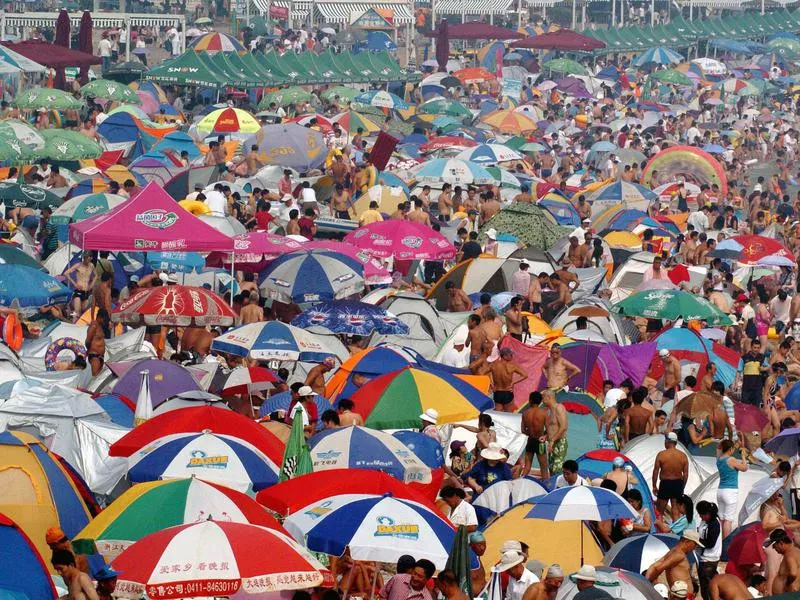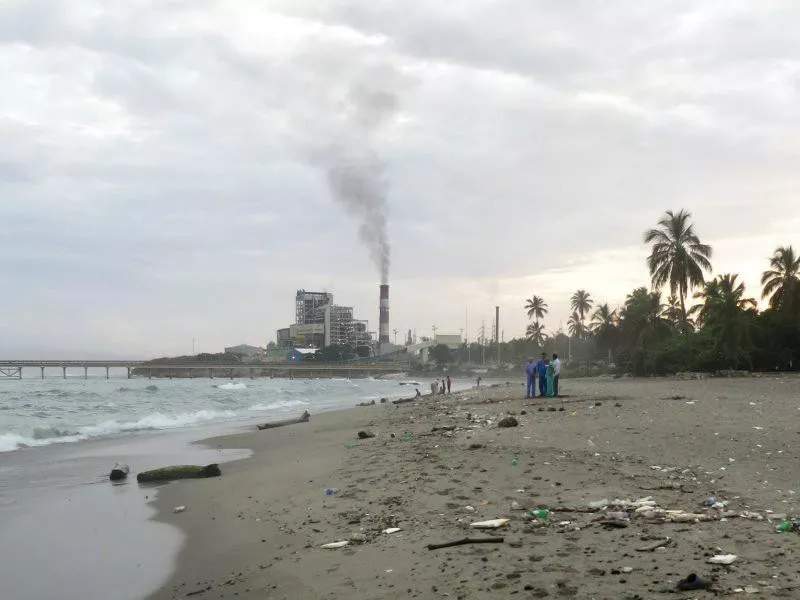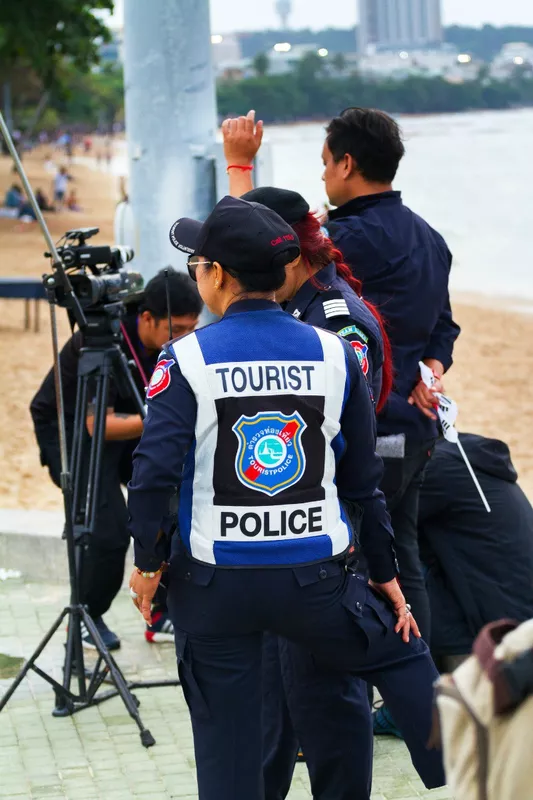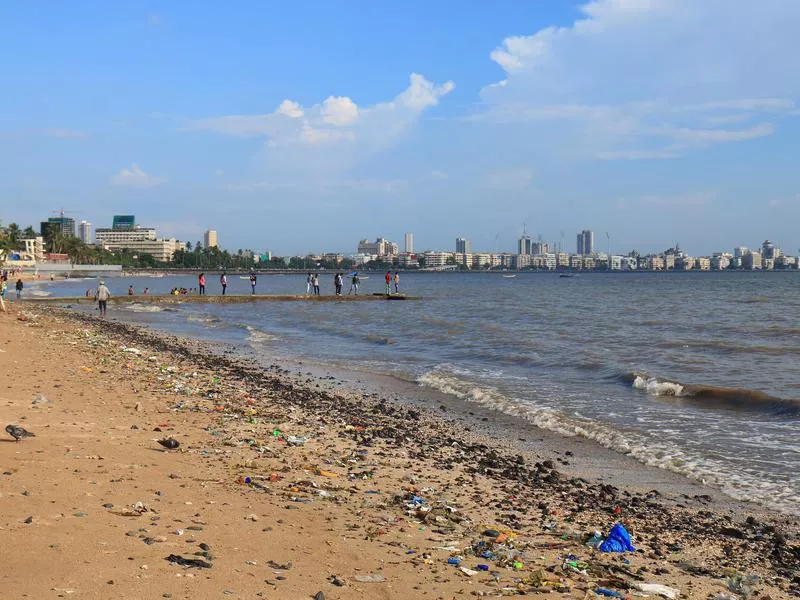When beaches are right, they’re everything. Who can resist lounging in the warm summer sun before enjoying a refreshing dip in the cool, salty sea?
But for every stunning and destination-worthy beach out there, there’s a terrible stretch of shoreline lurking in the shadows. And when a beach goes bad, it’s a really awful sight.
There are numerous reasons a beach might be considered the worst of the worst, but pollution is No. 1 by far. With many urban centers located near water, strong conservation efforts are a must. Sadly many cities lack robust controls around sewage discharge, especially those in poorer or developing nations. But even wealthy U.S. and other first-world countries have their share of water woes.
Besides pollution, beaches can also be plagued by crime, dangerous wildlife, overcrowding, general drabness — or in particularly dire cases, some combination of all of the above.
Which beaches fit the criteria for being, well, the most dismal on earth? Read on. And next time you have a hankering for a beach day, don’t make plans to visit these destinations.
Freedom Island – Manila, Philippines
It’s hard to fathom just how much garbage lines the shores of Manila Bay. To give you an idea: Between January and May of 2019, 400 truckloads — or more than 100,000 cubic feet — of trash was cleared away from the infamously befouled area.
That clean-up was part of a sorely needed rehabilitation effort that began at the beginning of the year. But while commendable, such efforts have at times seemed futile; clear away the garbage, and more quickly returns. Ambitious, longer-term plans to install sewer treatment plants have promise — but for now, the garbage festers.
One of the worst destinations along the bay is Freedom Island, where cheap, disposable plastic produced by companies like Unilever and Nestlé routinely washes ashore. A couple years ago, environmentalists collected 54,260 pieces of plastic on the beach, a truly staggering amount.
The situation is sad not only for tourists, who should avoid visiting this island, but local wildlife. Freedom Island is an important site for migratory animals, to the extent that it was listed as a “critical habitat” in 2017. Can you imagine migrating to a veritable trash heap?
Guanabara Bay – Rio de Janeiro, Brazil
The 2016 Summer Olympics exposed a dirty secret in Rio: the fetid waters of Guanabara Bay.
The year before the games began, an AP report warned of the bay’s waters being “so contaminated with human feces that [athletes] risk becoming violently ill and unable to compete in the games.” Competitors were told to avoid splashing water on each other and to use hand sanitizer after competing or practicing. Some even took to bleaching their oars and paddles.
Still, at least one athlete, Belgian sailor Evi Van Acker, fell victim to the filth. “Evi caught a bacteria in early July that causes dysentery,” her coach said at the time. “The likelihood that she caught it here [in Rio] during contact with the water is very big.”
The problem with Guanabara Bay is a problem that afflicts all urban bodies of water: massive pollution from humans. In this case, more than 16 million people live around the bay, and many homes lack proper sanitation. This means raw sewage is pumped into the water daily, which makes the water highly contaminated.
Unless you want to end up like Evi, it’s probably best you skip a visit to this noxious bay.
Fujiazhuang Beach – Dalian, China

Xinhua, Lu Wenzheng / AP Photo
When we think of a day at the beach, the last thing we envision is sharing precious sand and water space with 50,000 others. But that’s exactly what happens at Fujiazhuang, considered to be the world’s most crowded beach.
Apparently the beach is so full of humans that public service announcements warn against what seems quite obvious: “If you are suffering from eye disease, or a skin ailment, or diarrhea, or other ailments, please don’t swim and consult your doctor. Please do not spit, litter or smoke.”
We’re pretty sure at least a handful of those 50,000 beachgoers aren’t heeding the directive…
Darwin – Northern Territory, Australia
Australia has some stunningly beautiful and famous beaches — and others that are too dangerous for swimming. Those around Darwin fall into the latter category.
While they are indeed picturesque, these far-north beaches contain seriously deadly wildlife such as jellyfish that can kill with one sting, crocodiles and, just for good measure, sharks.
There are actually many areas of the country where wildlife makes it too dangerous to swim, but those beaches have special nets off the shore to allow for human recreation in the waters, which is not the case in Darwin.
Amazingly, though, none of this has stopped people from heading to the area’s beaches; when a crocodile was seen at a Darwin beach in May 2019, a visitor brushed it off, saying, “No one was really concerned at all, it was only little, just floating around.” There were also reports of beach-goers immediately heading back into the water after the crocodile left.
You’d be wise to exhibit a bit more caution when visiting this stretch of stunning but dangerous beach. Come for the beauty on land…and stay on land.
Kamilo Beach – Naalehu, Hawaii
Hawaii is one of the most beautiful places in the U.S., but it’s also home to one of the dirtiest places on Earth: Kamilo Beach.
There’s so much garbage on these shores that the beach has been dubbed “Plastic Beach.” How much plastic are we talking? Volunteers once picked up 15,000 piece of trash here in a single day.
Lest you think Hawaiians are an environmentalist’s nightmare, the plastic actually comes from the Great Pacific Garbage Patch, an accumulation of trash from Asia, North America and South America. This monstrous homage to people’s poor recycling habits used to be the stuff of legend, but recent research efforts have uncovered the truth.
It’s estimated that the Garbage Patch contains 1.8 trillion pieces of plastic, and covers an area of the Pacific that’s twice the size of Texas between Hawaii and California.
Kamilo Beach just happens to be in the perfect spot for capturing a wayward soda bottle or two…or 10,000.
Haina Beaches – San Cristóbal Province, Dominican Republic

This city and its beaches are so polluted that the locals call this the “Dominican Chernobyl.” Garbage is a major problem on beaches around the island nation, but in Haina the pollution mostly comes from an old battery factory where lead waste was not disposed of properly. The lead concentration is so high that it’s found at unsafe levels in the water, air and soil of Haina.
Contamination rates in adults have been found to be five times higher than normal; in children, it’s 10 times higher. This prompted the United Nations to declare that Haina has the highest lead-contamination level in the world, with the entire 84,000-plus population exhibiting signs of poisoning.
Cole Park – Corpus Christi, Texas

Environment Texas
Texas’ motto is famously “Go big or go home.” Apparently, this also applies to the dirtiness of its beaches.
A just-released report on beach pollution from the Environment America Research & Policy Center revealed that of Texas’ 167 beach sites, a whopping 141 were potentially unsafe for at least one day — one of the most dismal ratios in the country.
Worst of the worst was the beach at Cole Park in Corpus Christi, which was potentially unsafe 52 days of the 64 it was tested…more than any other beach analyzed in the report.
In a story about the woes of Cole Park, “Dallas Morning News” put a fine point on why this news is troubling, citing the report’s finding that “Coming in contact with contaminated water can cause gastrointestinal illnesses, respiratory disease, ear and eye infections, and rashes.”
Yeah, we’ll pass.
Pattaya – Thailand

Getty Images
Thailand is full of wondrous and exotic beaches. Just don’t go to Pattaya if that’s what you’re looking for.
In fact, this is probably the last resort area you want to find yourself in when visiting Thailand — unless of course you don’t mind a seedy underbelly.
“The Sun” has called this beach town the “‘Costa del Crime’ of south-east Asia,” a nod to the nickname for Spain’s Costa del Sol, which has a similar reputation for welcoming convicted British felons on the run. On a single day of raids, police made 180 arrests and seized dozens of weapons; last year, a police initiative to combat issues was given the alarming name “Operation rooting out crime for a livable city.”
Meanwhile, at the city’s beach, sewage — pumped into the water — and garbage churn in the surf.
Pattaya Beach isn’t loathed by all; it’s somehow managed to earn three stars on TripAdvisor. But hundreds of reviews dismissing it as “poor” or “terrible” provide a pretty convincing case for avoiding its shores.
Chowpatty Beach – Mumbai, India

Getty Images
Mumbai’s beaches in general tend not to be the cleanest. The seawater has way too much faecal coliform — bacteria from human and animal excrement — to be swimmable (levels are 60 percent higher than accepted standards). This is due to several factors, including the discharge of raw sewage from pipes that are not connected to the city’s infrastructure.
But Chowpatty Beach is even worse than others in the city, because its dirtiness doesn’t end in the water: The sand here is turning black from oil exposure. Oh, and trash is an issue too.
Pradip Patade, who’s been documenting aquatic life on the beaches of South Mumbai, told the publication “DNA India,” “The oil is now mixed with the trash that’s already on the beach and has begun raising a stink.”
That doesn’t exactly scream “come on and lay down for a nice afternoon of surf and sand.”
San Clemente Pier – Orange County, California
This beach has the unfortunate distinction of being the dirtiest in California according to Heal the Bay, a nonprofit working to improve safety and cleanliness in the watersheds of Greater Los Angeles. On its 2019 Beach Report Card, the group gave the beach a stinging “F” grade.
What makes San Clemente so dirty? Mostly untreated dry-weather runoff from a nearby storm drain and excrement from the birds that rest under the pier. For its part, the city of San Clemente is studying the source of microbial bacteria, installing netting under the pier to detract birds and launching an ad-hoc committee to address the poor water quality.
Thanks to these dogged efforts, there may come a time when this beach is clean enough to enjoy in earnest. Until then, there are much better and cleaner beaches to head to instead — also in Orange County, Treasure Island Beach near Laguna is considered one of the best in California.
Tenean Beach – Dorchester, Massachusetts
Beaches located near major coastal cities are rarely clean and picturesque, and Tenean is no exception. According to the latest report from Save the Harbor/Save the Bay, this beach south of Boston has the lowest six-year average ranking of any Boston Harbor beach analyzed by the conservancy organization.
With an 80 percent water-quality-safety ranking, the beach contains bacteria levels that are higher than the state’s standards for safe swimming one out of every five days. The Boston Water and Sewer Commission is conducting ongoing work to identify and address what exactly causes the pollution at Tenean Beach.
In the meantime, you should head to other city beaches — like M Street Beach in South Boston, which boasts a rating of 100 percent — instead.
Moroccan Beaches – North Africa
Morocco banned plastic bags in 2016 and strictly enforces the law, but despite its best efforts, ocean waste remains a major problem.
As in many other countries, Morocco itself is not entirely to blame for its dirty beaches. Greenpeace estimates that a truckload of trash enters world oceans every minute of every day.
Nonetheless, in Morocco, beach cleanup volunteers say they see their fellow countrymen dispose of garbage in the waters with ease.
The one silver lining? Despite the heavy garbage content, the water quality is fairly good at Morocco beaches.